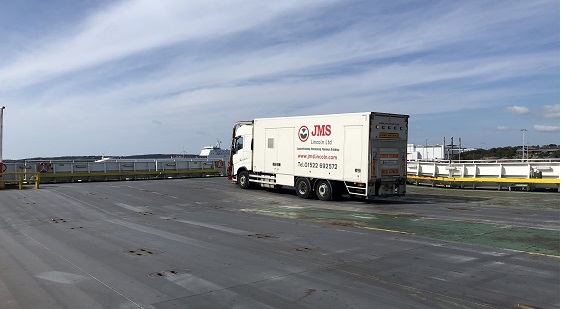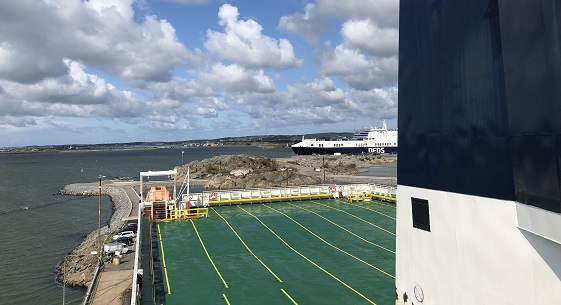Winter was approaching quickly for the Primula Seaways, a roll-on/roll-off (aka ro-ro) cargo ship that crosses the North Sea. The 231-m-long (757.9 feet) vessel was built in 2004 and had steel decks that were in “awful” condition, according to Josh Workman, contracts and sales manager for JMS Lincoln Ltd.
The Danish-owned ship takes cargo from Brevik on the eastern tip of Norway to Gothenburg on the western shore of the Sweden, crossing the Skagerrak Straight in between. But with weather coming down the pike, the eight-person JMS Lincoln crew had only eight days in August 2019 to roll on and then back off again. A non-working ship can’t turn a profit, after all. Per usual, time was of the essence to take the ship out of service, fix those issues, and turn it around quickly to get the Primula Seaways back up to speed — 6.7 knots, that is.
Prep and Planning
It was in Gothenburg where the JMS Lincoln crew gained access to the cargo ship. Despite having such a quick turnaround, the coatings crew still had to work with other trades onboard working on other maintenance and repairs. That meant that the crew had to communicate and accommodate those other trades while still staying on track.
For JMS Lincoln, the scope of work included blasting and coating two decks — the weather deck above and the car deck below. The chosen coating solution was a three-part system from PPG PMC (Protective & Marine Coatings), including an anti-skid broadcast into both decks.

The crew kept all of their equipment and materials, including an airless pump from Graco, in trucks that were brought onto the ship, which offered an onboard home base. The surface prep of the pitted steel, though, was completed using a modified Blastrac 2-45D lorry and S550 shot. That is a closed-circuit truck-mounted blaster that recycles the spent abrasive materials, offering an environmental aspect to the surface prep portion of the project. JMS Lincoln uses this lorry on horizontal surfaces to remove old coatings and prepare the steel substrate. On this project in particular, the crew had to remove the old coatings and get the steel back to a surface ready to accept coatings. To do this, they had four crew members preparing the substrate to achieve the International Standards Organization (ISO) 8501 SA 2.5 standard.
Staying on schedule was crucial on this project, and not only was there “careful planning required to complete such vast amount in short time,” according to Workman, but they also had to communicate often with the owner, DFDS Seaways. Among JMS Lincoln’s main selling points on the company’s website are planning and delivery, and those were definitely in high demand on this project. No wonder they’re a choice contractor!
Weather Woes
With only eight days total to work on the ship, the crew couldn’t be deterred by weather delays — and there were several days with inclement weather. Luckily, with a deck down below that wasn’t exposed to the elements, the crew was able to continue to work even when the environment wasn’t ideal on the top deck.
When it came time to coat, the crew applied the entire system wearing face masks, hi-vis clothes, steel-toed boots, gloves, goggles, and hearing protection. The PPG PMC system started with a layer of the Sigma Zinc at an average of 100 microns (3.9 mils) dry film thickness (DFT), followed by SigmaPrime at an average of 80 microns (3.1 mils) DFT.

The final two layers were two full 80-micron coats of Sigma Cover 456, a two-part epoxy build-coat designed to protect substrates in marine environments, according to the product data sheet. This product comes in custom colors, and it was green that was chosen for the second of the two coats. The topcoat on the top deck was also coated with safety yellow driving lanes using a machine linelazer.
For quality control, a PPG rep inspected the coatings on both levels of the
Primula Seaways
to ensure the proper thicknesses. In total, the crew covered 3,000 m2 (32,291.7 ft2) with the coating system.
Phenomenal Crew
“The crew worked phenomenally,” Workman said of his JMS Lincoln team. “[It’s] hard to complete such a big area in limited time, including the curing of the paint system,” Workman said. But they succeeded in those goals. “The crew was a pleasure to work with."
